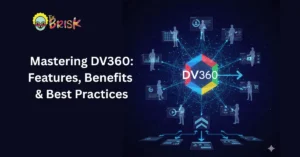No customer buys a product on their first visit to your website. They would need to research a little about the item before they make a final decision.
Marketers would want to know about the engagements and content a customer encountered that resulted in a positive action to improve campaigns and develop a more tailored customer experience. This is where multi-touch attribution comes into play.
Introduction
Multi-channel attribution looks at a person’s whole path of becoming a customer and sets importance on all of the ‘points of contact’ or ‘interactions’ along the way.
For instance, let us take a look at the case of a person who is thinking of buying a nice pair of shoes.
Firstly, the person is selected by Adidas commercials after conducting some Google searches. After that, the same person is shown a screen ad about Adidas catalogues, which they dismiss.
Then, on their Facebook timeline, they see a banner ad that captures their eye and directs them back to the Adidas website.
Finally, the person receives an email with a discount code, urging them to place an order immediately.
Each of these adverts plays a great role in the buying process. Marketers may look at the native ad and the email campaign and credit the sale to those efforts using multi-touch attribution.
They could therefore assume that the screen ad was unsuccessful and cancel the strategy altogether.
Different Kinds of Multi-Channel Attribution Models
Multi-channel attributions are of different types. Marketing attribution models are methods for determining how and where your users interact with your marketing channels before engaging. There are multiple models of multi-channel attribution that you can select.
The most commonly used multi-channel attribution models are as follows:
First Touch Attribution
The first-touch attribution model provides the first marketing click or visits in a conversion route the whole credit of the result.
If there was no click or view and the result came from an organic search, the initial impression will be used. The first-touch model is used when only the first touchpoint in a conversion route has to be addressed.

This model can help you figure out how to evaluate the initial touchpoint in a conversion route, which is especially useful when success is measured across a longer attribution window or a longer evaluation time.
Later touchpoints that might have an incremental effect are ignored in this method, which may downplay conversion routes that rely on lower and middle activities.
Last Touch Attribution
The last-touch attribution is the exact opposite of first-touch attribution. The last-touch attribution method provides the final click or visits in a conversion route the whole credit of the conversion.
If there were no clicks or visits, the very last impression would be used. The last-touch model is utilized when just the last touchpoints in a conversion route have to be considered.

This model can help you figure out how to evaluate the final touchpoint in a conversion route, which is especially useful when success is defined within a limited attribution window or when conversions are limited.
This approach ignores early touchpoints that might have a small or significant influence, and it may oversimplify conversion routes that rely on top and middle-funnel activities like awareness and deliberation.
Linear Attribution
This approach assigns equal weight to each interaction along the conversion process. Linear attribution is when we uniformly distribute credit across all channels and offer the same amount of credit throughout the journey, regardless of which channel generated the conversion.
If you want to view every marketing channel, the linear model is useful. However, if you want to go into every route and acquire insights into each of them, then this is not the ideal strategy for you.

This approach may help you appreciate the initial touchpoint that presented the product, the intermediate touchpoints that built consideration, and the last touchpoint that assisted customers in reaching the conversion cheval.
Usually, linear attribution models are more instructive than practical, as it’s unusual that all encounters have the same impact on conversion.
Time Decay Attribution
The time decay attribution model offers a rising amount of credit for a conversion to interactions as you get closer to the conversion.
The time decay model is used to assess the whole conversion route, but as touchpoints approach closer to a conversion, they are given significant credit.

This approach can help you learn how to evaluate the many contacts that contributed to a conversion, but it emphasizes the importance of the most recent touchpoints.
When compared to a last-touch model, the time decay attribution model more accurately shows how all encounters contributed to a conversion, which may be more representative of how customers interact with and assess advertising as they approach closer to converting.
So, Which Is The Best Model for Your Business?
The main takeaway is that there is no one method that works for everyone, which is why there are so many diverse models. People connect with brands, web pages, goods, and services in a variety of ways. Therefore, one approach may be best for business than another.
Position-based or decaying models perform well for most companies because they allocate better value to the most efficient interactions.
Conclusion
You will definitely need requires multi-channel attribution models to understand marketing channels and how they affect the marketing strategy. You can’t get a broad picture of various touchpoints and how they combine without these models.
As your marketing efforts get more complex, recognizing these strategies and monitoring multiple marketing channels may be quite beneficial for you. This is why you have to do thorough research like The Brisk.
There are several multi-channel attribution models that allocate values based on various criteria. Even then, what makes them all so effective is that they all deal with a mix of several channels, allowing you to assess numerous marketing channels and determine which of these or combinations to follow further.




No Comments